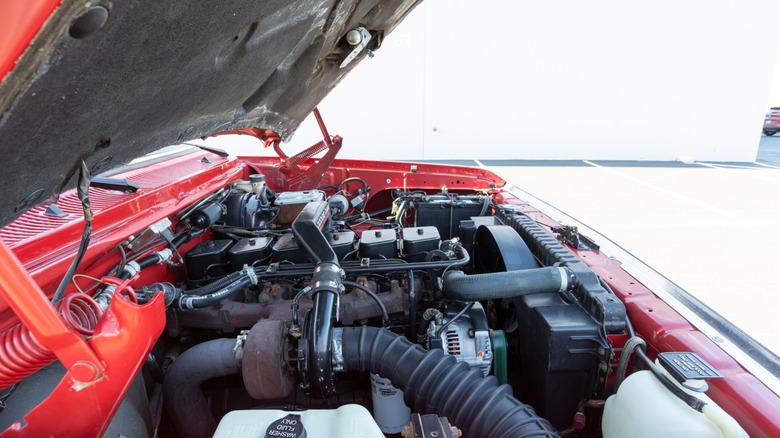
Diesel engines have been a driving force in the pickup truck world since the early 20th century, and for good reason. While they started in industrial and agricultural equipment, it didn't take long for automakers to realize diesel's potential in pickup trucks. They quickly became the go-to for vehicles that wanted to take performance to the next level, with torque outputs, durability, and fuel economy that were hard to beat.
By the 1980s and beyond, diesel pickups weren't just for farms and job sites;
they became the go-to for anyone needing a tough truck, synonymous with strength, capability, and reliability. Diesel engines have since gained a growing fan club that could give their gasoline counterparts a run for their money, and over the years, diesel tech has evolved to meet modern demands, bringing in cleaner emissions, smarter fuel systems, and even smoother driving dynamics.
This list highlights five of the best diesel engines ever put into a pickup truck. Powerplants that didn't just move metal, but shaped the industry and earned truck owners' undying loyalty and obsession. Whether you're a die-hard diesel fan or just diesel-curious, these engines are worth knowing (and admiring).
Read more: Fans Say These Are The 5 Best Years For Cummins Diesel Engines
5.9L 12-Valve Cummins
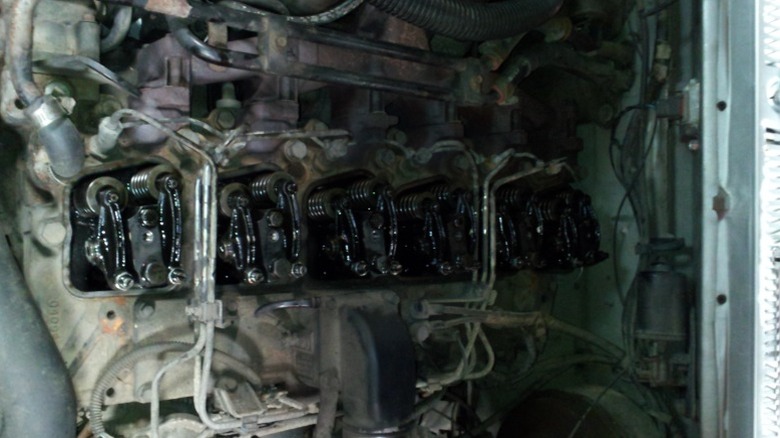
The 5.9-liter Cummins diesel engine, also known as the "12-valve" or the "6BT", was an instant hit from the moment it was dropped under the hood of the Dodge Ram in 1989. At a time when gas engines were all the rage and dominating the market, the 12-valve put industrial-grade torque in the hands of everyday drivers.
One of the biggest reasons for its cult following is its mechanical injection system. With no electronic controls, tinkering is easy. Farmers, mechanics, and truck enthusiasts alike love it for exactly that reason; you don't need a laptop to tune it, just a wrench and some diesel know-how.
Despite its relatively modest factory specs (160–215 horsepower and up to 440 lb-ft of torque), the 12-valve's cast-iron block, forged internals, and overbuilt components gave it massive potential. Tuners regularly squeeze out much more power with simple upgrades, and it's not uncommon to find these engines still running strong with over 500,000 miles on the clock.
Ford 6.7L Power Stroke V8
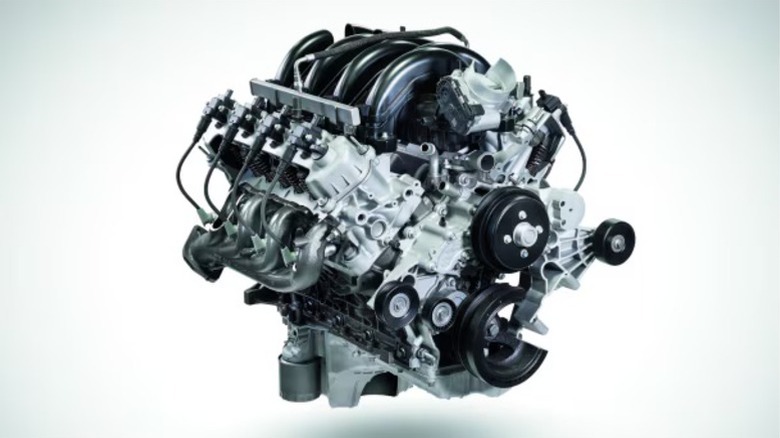
Ford's 6.7-liter Power Stroke came onto the scene in 2011, marking a new era for the brand and the Power Stroke nameplate. Earlier Power Stroke engines, like the 7.3 and the 6.4-liter offerings, were developed in partnership with Navistar International, but by 2009, tensions were high between the two brands, due to conflicts over warranty claims and pricing. The 6.7-liter, which had been in the works since 2008 under the codename 'Scorpion', was Ford's first diesel engine developed entirely in-house for their Super Duty trucks. This meant they had full developmental control and could create a diesel engine that reset expectations.
One of the standout features of the 6.7-liter Power Stroke is its reverse-flow layout, which places the exhaust inside the engine's V and the intake ports on the outside. This design switch-up was a good call by Ford, as it created a more compact turbocharger setup and improved throttle response. It also features a compacted graphite iron (CGI) block, which is stronger and lighter than traditional cast iron, improving both durability and fuel efficiency. Ford definitely did something right, as newer models of the 6.7-liter Power Stroke can push out up to 1,200 lb-ft of torque. This gives you the muscle needed for serious towing and hauling, but in a form factor that still works for daily driving.
6.6L Duramax LBZ
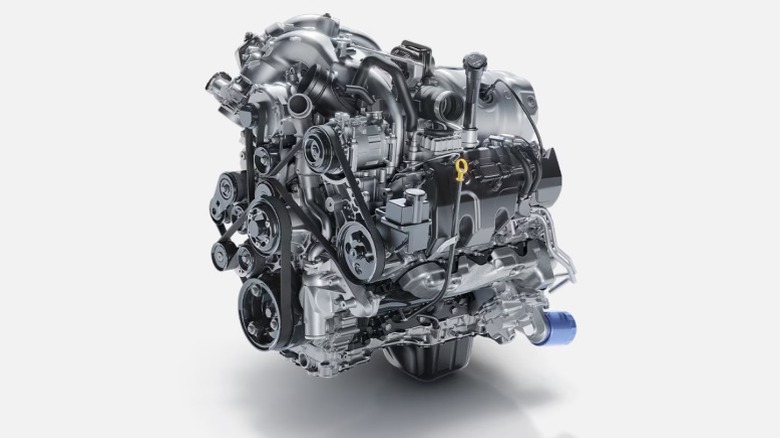
The 6.6-liter LBZ Duramax V8, produced by General Motors from 2006 to 2007, is often hailed as one of the best diesel engines the company ever built. Despite its short production run, it left a lasting impression. And today, LBZ-powered trucks are highly sought after by diesel fans, collectors, and performance tuners alike.
Why exactly is the LBZ so loved? For starters, it was the last Duramax engine built before stricter emissions regulations kicked in. That means it came without a diesel particulate filter (DPF) and featured a less problematic exhaust gas recirculation (EGR) system. Without the emissions add-ons that were introduced in the later models, the LBZ runs cooler, cleaner, and more efficiently, especially when modified.
From the factory, the LBZ delivered a solid 360 horsepower and 650 lb-ft of torque, paired with the legendary Allison 1000 transmission. Its strong cast-iron block, forged steel crankshaft, and upgraded connecting rods made it a favorite for diesel performance builds. With minimal tuning, it can easily handle much more power, and many do. That rare mix of durability, simplicity, and serious performance potential is exactly why the LBZ remains a standout today.
Ford 7.3L Power Stroke
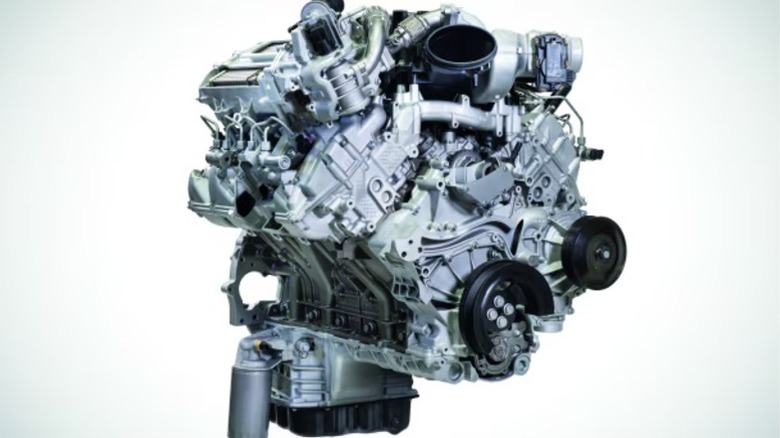
When diesel enthusiasts talk about bulletproof engines, the 7.3-liter Power Stroke almost always comes up. Introduced in 1994 and discontinued in 2003, this turbocharged V8 quickly became a legend in the truck world and one of the best diesel engines ever built. Not for record-breaking horsepower, but for its unmatched reliability and longevity. With proper maintenance, it wasn't unusual for the 7.3 to sail past 250,000 miles, and many are still on the road today.
Built during what some fans consider the golden age of diesel, the 7.3-liter Power Stroke was developed in partnership with Navistar International and featured HEUI (hydraulically actuated electronic unit injection) fuel systems, a cast-iron block, and forged internals. It was simple enough to maintain, tough enough to work hard every day, and forgiving of driver abuse, which is a combo made in heaven for fleets and DIYers alike.
Although it wasn't the most powerful diesel even by early 2000s standards (topping out at around 275 horsepower and 525 lb-ft of torque), it earned its reputation by refusing to die. When Ford replaced it with the more complex and failure-prone 6.0-liter Power Stroke, many fans never forgave them. For countless truck owners, the 7.3-liter remains the gold standard for diesel durability.
6.7L Cummins I-6
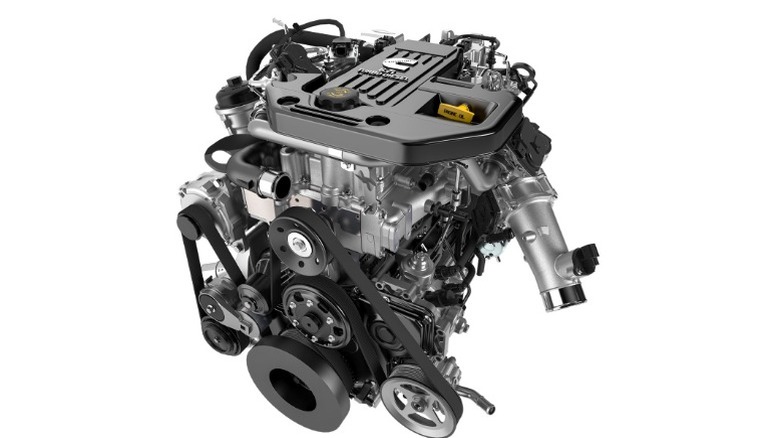
The 6.7-liter Cummins I-6 is the modern evolution of a staple diesel engine line, and it's earned its place under the hood of Ram Heavy Duty trucks since 2007. Designed to replace the beloved 5.9-liter Cummins, the 6.7 brought with it a host of upgrades that allowed it to meet stricter emissions standards while pushing performance to new levels. Cummins struck a smart balance between raw power and modern efficiency with features like a high-pressure common rail fuel system, variable geometry turbocharger (VGT), and exhaust gas recirculation (EGR) in the 6.7.
Where this engine really shines is in the numbers. In its latest high-output versions, it delivers up to 420 horsepower and over 1,000 lb-ft of torque, with the 2019 iteration being the first in its class to hit the coveted 1,000 lb-ft mark. The 6.7-liter is the reason why the 2024 Ram Heavy Duty is one of the trucks with the most torque. This gives Ram HD trucks top-notch towing capability and plenty of confidence to tackle steep grades and long hauls without flinching. Even with all the modern features, the straight-six layout keeps things simple and reliable. It's balanced, strong, and built to last, which is exactly what diesel fans love.
Want the latest in tech and auto trends? Subscribe to our free newsletter for the latest headlines, expert guides, and how-to tips, one email at a time.
Read the original article on SlashGear.











